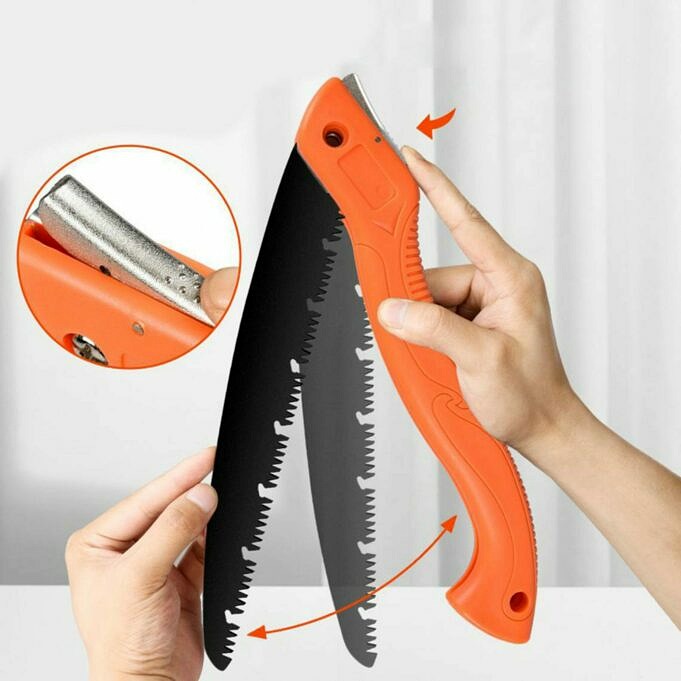Ever wonder what the differences are between a hand and a backsaw?
The Backsaw is ideal for cutting precise and clean woodworking projects. While the handsaw can be used for many other tasks including wood cutting,
We will be discussing the differences in these types of saws in this blog post. We will also offer some suggestions on how to select the right saw for you. Let’s get started!
What Is The Difference Between A Handsaw And A Backsaw?
A backsaw is a handsaw with a stiffening support rib at the back. A backsaw’s blade runs parallel to its handle.
Because it pulls or pushes the wood fibers, this design allows it to be more efficient in cutting along the grain.
A hand saw sounds just like the saw you use to cut wood. The hand saw does not have a stiffening spine on its back. Instead, it relies on tension to cut through wood.
You will often pull the blade towards you when you use a handsaw, rather than pushing it away. This not only requires less effort, but can also lead to fatigue over long periods of time.
Let’s now look at some tips to help you choose the right saw!
Selecting The Right Saw For Your Needs
Both a hand and backsaw can be used for many tasks in the house or shop. For larger projects, such as construction, or work with lumber, a handsaw is preferred.
Because you can cut straighter lines and not have to stop or apply more force, this is possible. After making several cuts of approximately 30 cm or more, tension on a handsaw will start to relax.
A saw with more rigid teeth like crosscut teeth is best for straight cuts. Softer teeth, such as rip teeth, are better for cutting curves. You can experiment with different blades to get the perfect cut.
How Would You Choose To Use A Backsaw Over A Handsaw?
A back saw is better for longer cuts that require more push force.
Tips
Use a backsaw, or handsaw to cut wood. Make sure you apply lubrication like mineral oil or machine oils. It should be applied on the blade, where it will contact the wood. This will give you a more smooth cut as well as less friction between your teeth and the wood.
Pre-made saw lubricants are also available, or you can make them yourself.
Some quick tips before we go!
To prevent splintering, make sure you cut along the center of the board. You can also mark the exact location of your blade with a pencil before you start cutting.
Try turning the screws slightly counterclockwise to loosen tension if your handsaw is stuck while you are cutting. It may take some time to find the perfect tension for smooth cutting.
Apply sandpaper to the handle or grip tape to prevent sweaty hands slipping off.
Which One Do You Think Is Best For Beginners?
For beginners, both a hand and backsaw are excellent choices. Hand saws don’t have rigid ribs and are therefore less stable. They require more tension to make the cut correctly.
A handsaw is better for beginners than a backsaw if they aren’t as strong or need to make curves in wood.
What Are Some Of The Benefits Of Using A Backsaw Over A Handsaw?
The advantages of using a backsaw: You can cut straighter lines when working on larger projects without stopping and applying more force. After making multiple cuts of 30 cm or more, the tension on a backsaw will tend to loosen. A saw with more rigid teeth, such as crosscut or curved teeth, is best for straight cuts.
A hand saw is better for curved cuts that require less push force.
Tip: Use a handsaw to apply lubrication, such as mineral oil and machine oil. This will allow for a smoother cut as well as less friction between the teeth of wood. Pre-made saw lubricants are available for purchase or you can make them yourself.
Conclusion
For larger projects that require greater precision, the backsaw is an excellent choice. You can also use it to cut curves and angles.
The hand saw, however, is more suitable for small projects and can be used in tighter areas. The final decision on which saw to use depends on what you need and the type of project you are working on.
What’s A Rip Saw?
A rip saw, a type that cuts along the length of a piece of wood rather than across it, is a saw with fine teeth.
What’s A Handsaw?
Hand saws are a different type of saw. They don’t have the stiffening-rib on their backs, which makes them less stable and requires more tension to make easier cuts. You will be pulling towards yourself when you use a handsaw to make your cuts. This not only results in less push force, but also makes it easier to fatigue over long periods of time.
What’s A Backsaw?
A backsaw has a stiffening spine on its back. This saw is great for straight, long cuts because it pulls or pushes the wood fibers as it cuts. You will often find yourself pushing away from your self when you use one, rather than pulling towards yourself as with a handsaw. A backsaw requires less strength, but can also cause fatigue over long periods of time.



